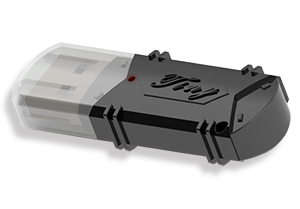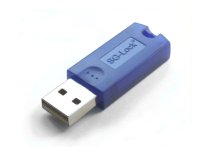
SonarViz 7 Tested With Sentinel UltraPro Dongle Clone
SonarViz 7 Sentinel UltraPro Dongle Clone a Wide variety of import and export formats, View & Export 2D & 3D PDF, Web, Google Earth.
View and analyze
The industry’s leading seafloor mapping software allows surveyors to:
Detect small targets via improved across-track resolution.
Identify differences between old and new surveys through the SonarWiz transparency, swipe, or line shift tools.
Preserve the full fidelity of sonar data across multiple formats. For example, SonarWiz allows for recording in industry-standard XTF or vendor-specific formats such as Edgetech JSF or Kongsberg-GeoAcoustics GCF.
Simplify mission execution through the use of a single, easy-to-learn mapping solution.
- Create superior contact reports thanks to improved editing features. Easily export data to a variety of formats including PDF, OpenOffice, Microsoft Word, and HTML.
- Optimize time on the water through the use of sophisticated planning tools.
- Reduce costs by leveraging real-time data acquisition to confirm quality and coverage prior to leaving the coverage area.
- Generate state-of-the-art mosaics, contact, and waterfall imagery with high-resolution 64-bit displays.
Survey Planning
Load background maps and charts from a range of formats including DNC, RNC, S57, and GeoTIFF. Automatically plan survey lines parallel to a reference line, within a polygon based on either efficiency or conventional patterns. Generate planned survey maps as a GeoPDF, GeoTIFF, ECW, JPEG or Google Earth. Estimate survey timing.
Post-Processing
- SonarViz 7 Sentinel Preview files with the SNIFF feature.
- Add and fix navigation data with NavInjectorPro.
- Leverage advanced signal processing and gain control; take advantage of features such as beam angle correction, de-striping, non-linear per channel TVG, AGC, Band Pass Filtering and Stacking, Contact (target) capture, annotation, and summary reporting via 3D Viewer.
- Employ flexible layback configurations.
- Easily printable output.
- Grid/contour isopach-type shapefile / grid generation from selected variables (e.g. altitude + depth).
- Hardware Compatibility
- SonarWiz is compatible with the following Sonar Hardware:
- Atlas NA, C-MAX, EdgeTech, Falmouth Scientific, GeoAcoustics, Imagenes, Innomar, Jetasonic, Klein Marine Systems, Knudsen, Kongsberg Hugin AUV, Kongsberg Mesotech, Marine Sonic, PingDSP, R2Sonic, SyQwest, Teledyne Benthos, Teledyne Gavia, Teledyne Odom, and Tritech.
- Please see our Supported Interfaces and File Formats for a list of the many formats we support. If you don’t see one you need just ask!
Real-Time Data Acquisition
- Leverage the SonarWiz Layout Manager to position windows and menus for maximum efficiency; save frequently used layouts.
- Control viewing of incoming statistics with System Info Display; edit and save display configurations.
- Connect sensors and monitor positioning quality with GPS Quality parameter indicators.
- Use right and left survey line indicators to facilitate helmsman operations.
- Acquire sonar, navigation sensor, depth sensor, payout meter, and magnetometer data simultaneously.
- Configure the comprehensive real-time signal processing and gain controls including Auto Gain, Auto TVG, Manual Linear Gain and Manual TV. Gains only affect visual information, not raw data.
- Control mosaic creation in real-time with Mosaic Mode; feature helps manage large surveys by displaying only data that’s been specifically requested.
SonarViz 7
Side-Scan Sonars, on the other hand, capture the seabed image. It is used in many fields such as seafloor sediment characterization, vegetation, detection of objects on the bottom, visual fragmentation, marine archaeology, search and dredging, and Shipwreck Surveys.
In a country surrounded by seas on three sides, it is expected that projects for the seabed will increase.
is the case. The increase in such projects, the making of seafloor maps, geophysical surveys and water
It will cause oceanographic studies on biology to come to the fore.
Such studies
SonarViz 7 Sentinel are one of the main branches of surveying engineering and also require working together with other engineering disciplines. However, as a formation, in addition to classical map engineering knowledge, information such as computer, electronics, navigation is inevitable. The fact that the area to be worked on is not visually visible in marine studies and that it is constantly in motion due to the nature of the work requires the use of very different techniques and equipment.
The aim of this presentation, rather than going into theoretical details, is to draw a general framework for the principles of the study and to give an idea to our colleagues, who are faced with this type of measurement, about what they can relate to their professional knowledge.
2. Locating
Basically, the basis of all studies is based on the acquisition of instant location information. However, inland studies
as it is impossible to take a position by standing still in a certain place,
to receive the location information with the desired precision, and to obtain this information from other equipment required for the job.
Synchronizing and combining with incoming data is the main subject of marine studies.
SonarViz 7 Sentinel
With today’s technologies, location determination is done in two different ways. Total stations or GPS techniques are used in studies up to certain distances from the shore, whereas only GPS techniques can be used in studies far from the shore. Since angle and distance are measured with Total Station, these studies are called polar methods. In general, it is a suitable device in coastal construction work, for appliqueing a pile, or for dredging a seafloor, to position equipment. However, it is very inconvenient to measure continuously from the shore for a moving vessel.
For this purpose, there are Total Stations with servo motors that can automatically follow the prism for both land surveys and sea surveys by locking on the active prism. This type of Total Stations instantly sends the measurements they make to a radio modem.
This data is automatically synchronized and combined with other measuring devices used by means of software for marine studies on the computer.
2.1 Data Flow in Marine Surveying
In sea surveys, there is a central computer system on the boat that controls the entire system. While this system records the location information from the GPS receiver, the depth information from the acoustic depth gauge, and the correction data from the heave and pitch roll sensors, it also sends the corrected location data at desired intervals to other self-registered devices. These devices are devices that record geophysical, geological, and seismic data of the seabed. However, the position of each of these devices on the boat is in different places. In addition, some of them are units that are pulled from the back of the boat with long steel ropes. For this reason, it is necessary to calculate the offsets of each unit with respect to the position of the GPS antenna at the same time and transfer their correct position to them.
Almost all geophysical devices obtain images using acoustic methods that show the seafloor and make a section under the floor. The coordinates sent from the navigation software are then used to combine these images to obtain a mosaic and to position them correctly.



